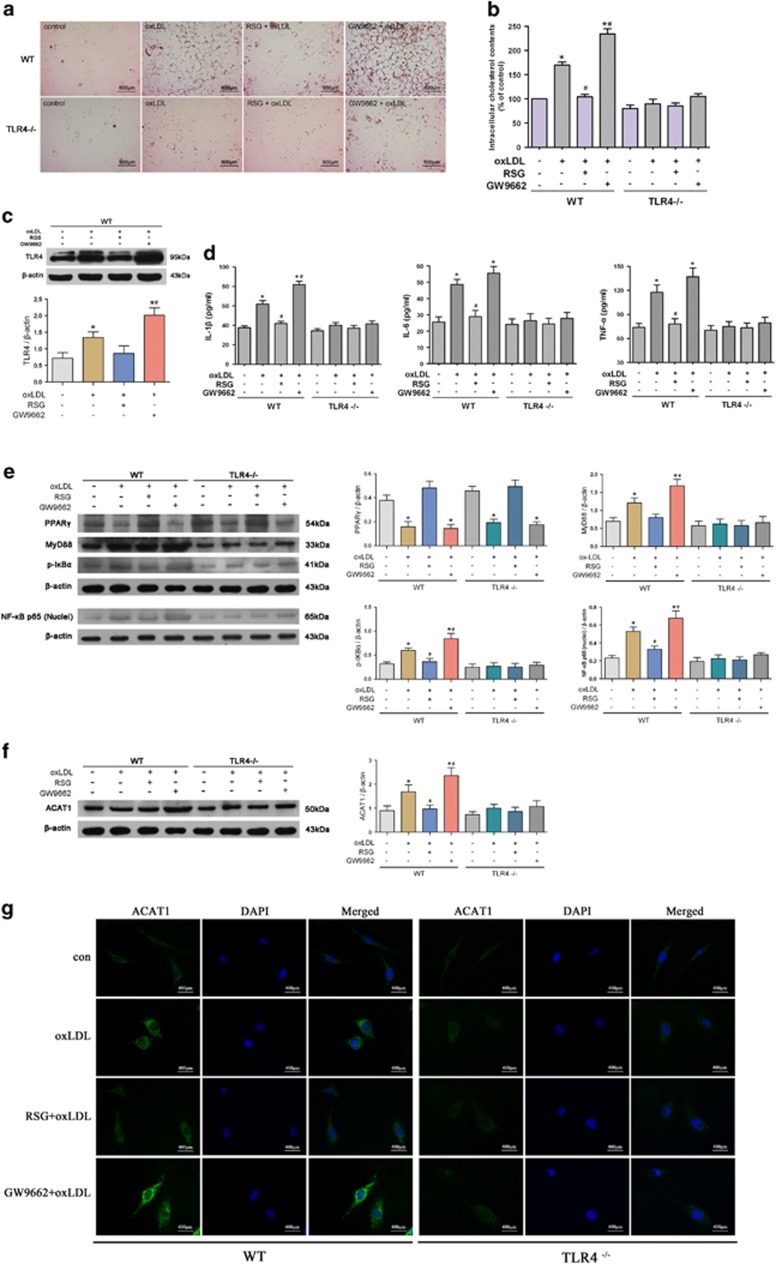Figure 7.
PPARγ inhibits VSMC foam cell formation by suppressing TLR4-mediated inflammation and ACAT1 expression. (a–g) Primary VSMCs from WT and TLR4−/− mice were treated with oxLDL (80 μg/ml) for 24 h in the presence of RSG (50 μM) or GW9662 (10 μM). RSG significantly inhibited the oxLDL-induced lipid droplet accumulation (a) and intracellular cholesterol elevation (b) in VSMCs from WT mice, whereas GW9662 exposure exerted the opposite effect. In contrast, oxLDL failed to increase lipid droplet accumulation (a) and intracellular cholesterol level (b) in VSMCs from TLR4−/− mice. Neither RSG nor GW9662 exerted detectable impact on lipid droplet accumulation (a) and intracellular cholesterol level (b) in VSMCs from TLR4−/− mice. RSG significantly inhibited, whereas GW9662 further promoted, the oxLDL-induced TLR4 (c) and proinflammatory cytokine (d) expressions. The same effect of PPARγ was also observed in MyD88, NF-κB p65 (nuclei) and p-IκBα expressions in oxLDL-loaded VSMCs (e). In contrast, RSG or GW9662 exposure exerted no effect on the expressions of MyD88, NF-κB p65 (nuclei), p-IκBα and proinflammatory cytokines in VSMCs from TLR4−/− mice. RSG and GW9662, respectively, suppressed and promoted the oxLDL-induced ACAT1 expression in VSMCs from WT mice, but it was not the case in VSMCs from TLR4−/− mice (f and g) (*P<0.05 versus control WT-VSMCs; #P<0.05 versus WT-VSMCs with oxLDL challenge). Results were presented as mean±S.D. (error bars) of three independent experiments

